 June 11, 2020 John E. Ross, KD8IDJ, Editor
| ||||||
ARRL Contest Program Issues Field Day 2020 FAQ The ARRL Contest Program has released some Frequently Asked Questions related to the temporary rule waivers for Field Day. On May 28, the ARRL Programs and Services Committee (PSC) adopted these provisions only for the June 27 - 28, 2020, event: (1) Class D stations may work all other Field Day stations, including other Class D stations, for points, and (2) an aggregate club score will be published, which will be the sum of all individual entries that indicate a specific club. Contact the ARRL Contest Program with any questions related to Field Day 2020. Q: Several of our club members are going to operate independently and wish to attribute their scores to the aggregate club score. What call sign should they use? A: Participants should use their own call signs. Except for Class C (mobile) entries, all transmitters, receivers, and antennas Q: How does my club submit an aggregate club score? Does the club need to add up each participating member's scores and submit a club entry with the aggregate score under the club call sign? A: Each participant will submit his or her own independent entry under his or her call sign. ARRL will calculate the aggregate score based upon the club name entered on the official Field Day entry form via the web applet (preferred method) or on the paper Field Day entry form. In order for results to be tabulated correctly, all club participants must enter the club's official name exactly the same, avoiding abbreviations or acronyms. This is important! Q: Our group is still planning to operate at the usual Field Day site, but some members do not feel comfortable gathering in a large group this year. Can we still submit an entry using the club call sign, as well as have members operating from home using their own call signs? A: Yes. If your club is still hosting a group Field Day effort, it will submit an entry as usual, using the club call sign. Club members operating at home will submit separate entries with their own call signs and will enter the club name on the entry form for club aggregate scoring. Q: Can a club member operate from home using the club call sign? A: Yes, but the call sign may only be used in one location. The member must receive permission from the trustee of the club call sign. Q: Our club normally enters Field Day in Class A. If we operate from our home stations, in which class should individual members enter in order to be included in the aggregate club score? A: Each member will operate independently and will submit the entry using whatever class applies to their operation. Typically, home stations running on commercial ac power are Class D, while home stations running on battery, solar, generator, or the like (i.e., not from ac mains) are Class E. When the results are published, each club member will be listed in the results under the class in which they operated. For 2020 only, aggregate club scores will be listed by the club name in a separate listing. Read more. Refer to the complete rules to determine eligibility for bonus points. -- Thanks to ARRL Contest Program Manager Paul Bourque, N1SFE, ARRL Volunteer Monitor Program Recognizes Good Operators Volunteer Monitor Program Coordinator Riley Hollingsworth, K4ZDH, said the program has recognized numerous radio amateurs with Good Operator Notices. "One facet of the ARRL and FCC agreement that set up the Volunteer Monitor Program calls for ARRL to recognize especially good amateur radio behavior, in order to encourage compliance with FCC rules and further the efficiency of the Amateur Radio Service," Hollingsworth said. "Seventeen operators in 15 states received Good Operator Notices in the first quarter of 2020. The Good Operator Notices went to veteran operators as well as newcomers, including a 13-year-old in Hollingsworth also said that a 2-meter repeater operator received a Good Operator Report for establishing and managing a COVID-19 net in Pennsylvania, while other operators of various license classes received notices for everyday SSB and CW operation on the HF bands. Recipients were nominated on the basis of operation observed by Volunteer Monitors (VMs). According to Hollingsworth, Volunteer Monitors reported 2,035 hours monitoring on HF, and 2,856 hours monitoring on VHF/UHF and other frequencies during May. After kicking off on January 1, the new Volunteer Monitor Program ramped up to operational status earlier this spring, starting with a "soft rollout" that started on February 1, designed to familiarize VMs with issues on the bands and to put into practice what to report and what to ignore, based on their training. Hollingsworth uses a system called VMTRAC -- developed by a VM -- to measure the work of VMs and determine instances that qualify for good operator or discrepancy notices, referral to the FCC, or follow-up with FCC requests to the VM program. -- Thanks to Riley Hollingsworth, K4ZDH UK Special Events to Recognize Historic Marconi Factory Radio Broadcast Two special events in June will mark the centennial of the first entertainment radio broadcast. England's Chelmsford Amateur Radio Society (CARS) will operate special event GB100MZX on June 13 - 20, and Wales' Dragon Amateur Radio Club will operate special event GB0MZX on June 12 - 21. Both will commemorate the 100th anniversary of the live radio recital by well-known Australian soprano Dame Nellie Melba, on June 15, 1920. These special events open the door to some interesting radio history.
MZX was the call sign at Marconi's second Chelmsford radio factory on New Street, built in 1912. A CARS history recounts that after 1913, all G- and M-prefix call signs were allocated to the UK, with the M prefix being associated with Marconi. The Marconi factory received a general experimental license in late 1919 with the MZX call sign. According CARS, in order to test transmitters manufactured in the new plant, it became common practice to power them into an antenna and invite people to read "railway timetables or similar mundane material" over the air. Listeners who wrote Marconi suggested that he air more enlightening material, so some locals were informally invited into the factory to tell stories or even sing from a makeshift studio. Two 750-foot towers at the factory supported wire antennas for MZX, which by the time of the historic broadcast was running a 15 kW transmitter.
Sensing a potential profit, The Daily Mail newspaper paid Dame Nellie Melba to travel to Chelmsford by train, where she was picked up in a chauffeur-driven car and taken the long way around Chelmsford on a route advertised beforehand to waving crowds before arriving at the studio in New Street, just a few hundred meters away. The CARS account continues, "Her historic performance was very well received, although she realized that possibly future (paid) public performances may suffer if she was often 'on the radio,' [and] she never made a radio broadcast again. "The Postmaster-General was not amused by such trivial use and withdrew the license in November 1920 on 'interference grounds,' in particular with Croydon airfield. The public clamor for reinstatement was substantial, and due to pressure from the Wireless Society of London and the House of Commons, the Post Office eventually relented." The Wireless Society of London eventually became the Radio Society of Great Britain (RSGB), the International Amateur Radio Union member-society. Additional history of Marconi's manufacturing and broadcasting in the UK appears on the CARS website. The K7RA Solar Update Tad Cook, K7RA, Seattle, reports: Sunspots made a solid reappearance over the June 4 - 10 reporting week, with average daily sunspot number rising from 3.3 to 14. As expected, the average 10.7-centimeter solar flux rose from 69.6 to 71.3. The average daily planetary A index dipped from 6 to 5.1, while average daily middle latitude A index changed from 5.7 to 6.1.
Predicted planetary A index is 5 on June 11 - July 3, then 8 and 12 on July 4 - 5, and 5 on July 6 - 25. Sunspot numbers for June 4 through 10 were 12, 13, 15, 16, 17, 14, and 11, with a mean of 14. The 10.7-centimeter flux was 70.1, 71.1, 71.6, 71.6, 71, 72.4, and 71, with a mean of 71.3. Estimated planetary A indices were 4, 4, 3, 9, 4, 5, and 7, with a mean of 5.1. The middle latitude A index was 5, 4, 2, 10, 6, 5, and 11, with a mean of 6.1. A comprehensive K7RA Solar Update is posted Fridays on the ARRL website. For more information concerning radio propagation, visit the ARRL Technical Information Service, read "What the Numbers Mean...," and check out K9LA's Propagation Page. A propagation bulletin archive is available. Monthly charts offer propagation projections between the US and a dozen DX locations. Share your reports and observations. Just Ahead in Radiosport
See the ARRL Contest Calendar for more information. For in-depth reporting on amateur radio contesting, subscribe to The ARRL Contest Update via your ARRL member profile email preferences. ARRL Announces Updated Features on Contest Portal The much-anticipated updated features at the ARRL Contest portal are here! These web-based tools provide an updated interface to contest data for all ARRL-sponsored contest events, including:
ARRL Contest portal users will notice other minor changes to the site, as some functions have been moved on the page for better functionality and flow. The ARRL Contest portal is now a one-stop shop for all ARRL-sponsored contests. From the site, you can access everything, from the start time of a contest to your post-event certificate of accomplishment. All ARRL contest information is now conveniently located in one centralized location. Contact the Contest Program Manager for more information on the updated features and on ARRL contests in general. Deadline is June 15 for 2020 McGan Silver Antenna Award Nominations The deadline is Monday, June 15, to submit nominations for the 2020 Philip J. McGan Memorial Silver Antenna Award, presented annually to a radio amateur who has demonstrated success in public relations on behalf of amateur radio and who best exemplifies the volunteer spirit of Philip McGan, WA2MBQ (SK). A journalist, McGan was the first chairman of the ARRL's Public Relations Committee, which helped reinvigorate ARRL's commitment Activities for which the McGan Award is presented include those specifically directed at bringing amateur radio to the media's and the public's attention in a positive light. This may include such traditional methods as news releases or interviews, or less traditional methods, such as hosting a radio show or being an active public speaker. Nominees must be ARRL members. The ARRL Board of Directors will choose the award winner at its July 2020 meeting. Nominations must be received at ARRL Headquarters by the close of business on Friday, June 15, 2020. Nominations must be on an official entry form. Anyone may make a nomination. Read more. ARISS Establishes Itself as an Independent Organization Going forward, the US arm of the Amateur Radio on the International Space Station International working group will be known as ARISS-USA, an independent organization. ARISS serves as the intermediary to arrange contacts between schools and organizations on Earth and ISS crew members. ARISS-USA incorporated as a non-profit entity in Maryland in late May. The move will allow ARISS-USA to work independently, soliciting grants and donations. ARISS-USA will continue promoting amateur radio and science, technology, engineering, arts, and math (STEAM) goals within schools "Our working group status made it cumbersome to establish partnerships, sign agreements, and solicit grants," Bauer said. "These can only be done as an established organization." The move toward becoming an independent organization has been discussed for quite a while, ARISS-USA said in announcing the change. "ARISS-USA will maintain its collaborative work with ARISS International as well as with US sponsors, partners, and interest groups," the announcement said. "The main goal of ARISS-USA remains as connecting educational groups with opportunities to interact with astronauts aboard the [space station]. ARISS-USA will expand its human spaceflight opportunities with the space agencies beyond low-Earth orbit, starting with lunar opportunities including the Lunar Gateway. ARISS-USA will continue to review and accept proposals for ISS contacts and expand its other educational opportunities to increase interest in space sciences and radio communications." AMSAT President Clayton Coleman, W5PFG, said AMSAT would work with ARISS-USA to ensure a smooth transition for operations and funding. "Many of AMSAT's members are an integral part of the ARISS team," he said. "The human spaceflight element of AMSAT's vision has been realized through these contributions." ARISS-USA can accept tax-deductible contributions via AMSAT-NA through the ARISS website. Read more. Announcements
Youth Working Group in IARU Region 1 Inaugurates YOTA Online The International Amateur Radio Union (IARU) Region 1 Youth Working Group inaugurated YOTA (Youngsters on the Air) Online in late May. The program is an opportunity for young radio amateurs from Region 1 (Europe, Africa, and the Middle East) to gather online each Region 1 Youth Working Group chair Lisa Leenders, PA2LS, moderated the May 28 gathering. She said the YOTA Online approach evolved because a lot of activities fell victim to the COVID-19 pandemic. Beyond that, she said, YOTA Online provides an interactive venue for those who might be unable to attend even in-person activities. The inaugural YOTA Online session ran about 1 hour. In addition to social media platforms Facebook, YouTube, Instagram, and Twitch, Leenders said the session was streamed on Amateur Television via the Es'hail QO-100 geostationary satellite from a location in Belgium, with good reports.
"A huge thanks to everyone watching the first YOTA Online session," Leenders said. "The successful session gathered more than 600 unique viewers from all continents except Oceania and Antarctica, as far as we could track. Considering this, we can say that the event was indeed taking place worldwide." YOTA Online was created by a team of young hams from six European countries. The first event involved dozens of hours of planning, with several team sessions held in advance to make the free YOTA broadcast available around the world. Leenders asked all who watched the event or viewed it after the fact for any feedback. The form also gives viewers a chance to suggest topics for future YOTA Online gatherings. The second YOTA Online session is set for Thursday, June 25, at 1800 UTC. Indian Amateur Radio Volunteers Support Communication During Cyclones News media in India report that amateur radio volunteers came to the aid of district officials during Cyclone Nisarga. The storm made landfall on India's west coast on June 3, leaving at least one person dead, but sparing the densely populated city of Mumbai. "As all modes of communication collapsed in less than half an hour after severe Cyclone Nisarga made landfall, a group of nine In May, The Hindu reported that radio amateurs worked hand in hand with the Odisha Disaster Rapid Action Force (ODRAF) ahead of Cyclone Amphan. "Amphan tested what we had learnt from a simulation of a real-life situation during calamity on an uninhabited island without power and conventional telecommunication in Chilika Lake in 2019 and 2020," said Gurudatta Panda, VU3GDP, a member of the Amateur Radio Society of Odisha (ARSO). ARSO members told the newspaper that the Odisha government In early May during Cyclone Fani, ARSO members provided support to the public in Puri, when conventional telecommunications were cut after the storm made landfall. The hams were even able to set up an internet connection via ham radio to reach out to social media. ARSO said an increase in the amateur population in Odish would benefit the government and the public in the cyclone- and flood-prone state. "Educated youths, retired communication experts, and non-government organizations in all parts of Odisha can be motivated to take up amateur radio as a hobby to help their own community at the time of need," ARSO President Chandra Sekhar Patnaik, VU2CSF, said. In Brief...
Upcoming ARRL Section, State, and Division Conventions Note: Many conventions and hamfests have been canceled or postponed due to the coronavirus pandemic. Check the calendar of canceled events on the ARRL website.
Find conventions and hamfests in your area
. .
Subscribe to...
Free of charge to ARRL members...
| ||||||
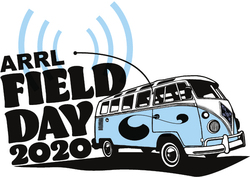 located within a 1,000-foot-diameter circle may operate using a single call sign. This prohibits the use of a single call sign from more than one location. Under the 2020 waiver, those operating from home, including backyard operations, must use their own station call signs. Multiple home stations operating with a club call sign or modified club call sign, such as W1AW-1, W1AW-2, W1AW-3, etc., are not allowed.
located within a 1,000-foot-diameter circle may operate using a single call sign. This prohibits the use of a single call sign from more than one location. Under the 2020 waiver, those operating from home, including backyard operations, must use their own station call signs. Multiple home stations operating with a club call sign or modified club call sign, such as W1AW-1, W1AW-2, W1AW-3, etc., are not allowed. North Carolina for CW operation during the Youth on the Air Special Event, and a 14-year-old in Wyoming for SSB operation."
North Carolina for CW operation during the Youth on the Air Special Event, and a 14-year-old in Wyoming for SSB operation.".jpg)
.jpg)
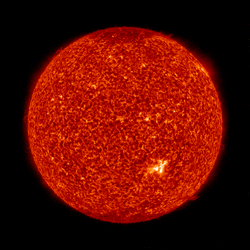 The outlook for the next 45 days has solar flux at 72 on June 11; 70 on June 12 - 17; 68 on June 18 - 24; 70 on June 25 - 26; 72 on June 27 - July 11; 70 on July 12 - 13; 68 on July 14 - 21; 70 on July 22 - 23, and 72 on July 14 - 25.
The outlook for the next 45 days has solar flux at 72 on June 11; 70 on June 12 - 17; 68 on June 18 - 24; 70 on June 25 - 26; 72 on June 27 - July 11; 70 on July 12 - 13; 68 on July 14 - 21; 70 on July 22 - 23, and 72 on July 14 - 25.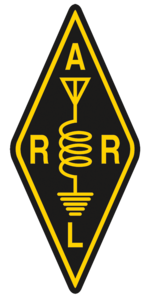 Contest Score viewer, including a searchable call history and records
Contest Score viewer, including a searchable call history and records.jpg) to public relations, and he served as ARRL PIO for the New Hampshire Section.
to public relations, and he served as ARRL PIO for the New Hampshire Section.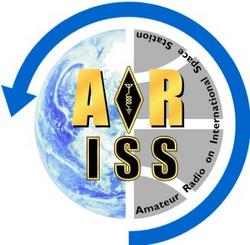 and educational organizations. ARISS-USA lead Frank Bauer, KA3HDO, noted that the scope and reach of what ARISS accomplishes has grown significantly since its modest start in 1996.
and educational organizations. ARISS-USA lead Frank Bauer, KA3HDO, noted that the scope and reach of what ARISS accomplishes has grown significantly since its modest start in 1996.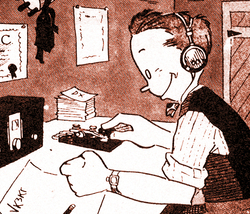 Sergey Ryzhikov and Sergey Kud-Sverchkov.
Sergey Ryzhikov and Sergey Kud-Sverchkov. month. For each session, a YOTA team will present various topics; the initial session focused on the Youth Contesting Program (YCP) in Region 1, in which young radiosport enthusiasts operate from well-equipped contest stations for various events. The sessions, which are open to all and conducted in English, also offer the opportunity for participants to get answers to questions addressed to the online community. Each session wraps up with a prize raffle.
month. For each session, a YOTA team will present various topics; the initial session focused on the Youth Contesting Program (YCP) in Region 1, in which young radiosport enthusiasts operate from well-equipped contest stations for various events. The sessions, which are open to all and conducted in English, also offer the opportunity for participants to get answers to questions addressed to the online community. Each session wraps up with a prize raffle.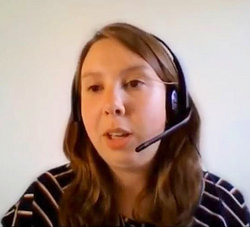
-2.JPG) independent ham radio operators using wireless communication became the eyes and ears for the district administration," The Hindustan Times
independent ham radio operators using wireless communication became the eyes and ears for the district administration," The Hindustan Times 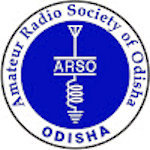 should support and promote amateur radio to increase preparedness at the time of communication failure. ARSO has 25 members who regularly update their technology and operating skills, the paper said.
should support and promote amateur radio to increase preparedness at the time of communication failure. ARSO has 25 members who regularly update their technology and operating skills, the paper said.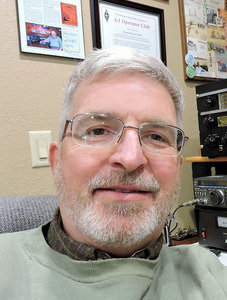 Richard Budd, W0TF, has been appointed as North Dakota ARRL Section Manager. He succeeds Nancy Yoshida, K0YL, who resigned on June 2 after serving since January 2018. Yoshida will become the vice president of the YL International Single Sideband System this year and felt she could not do justice to both leadership roles. Budd, who lives in York, will complete the remainder of Yoshida's term, which extends through September 30. Because Budd was also the only nominee to submit a petition to run for the next term of office as the North Dakota Section Manager by the June 5 deadline, he will continue as Section Manager for the 2-year term that starts on October 1, 2020. A ham since 1980, Budd had served as a North Dakota Assistant Section Manager since 2019, was Section Emergency Coordinator in 2018, and previously served as North Dakota's Official Observer Coordinator. ARRL Radiosport and Field Services Manager Bart Jahnke, W9JJ, made the appointment after consulting with ARRL Dakota Division Director Matt Holden, K0BBC.
Richard Budd, W0TF, has been appointed as North Dakota ARRL Section Manager. He succeeds Nancy Yoshida, K0YL, who resigned on June 2 after serving since January 2018. Yoshida will become the vice president of the YL International Single Sideband System this year and felt she could not do justice to both leadership roles. Budd, who lives in York, will complete the remainder of Yoshida's term, which extends through September 30. Because Budd was also the only nominee to submit a petition to run for the next term of office as the North Dakota Section Manager by the June 5 deadline, he will continue as Section Manager for the 2-year term that starts on October 1, 2020. A ham since 1980, Budd had served as a North Dakota Assistant Section Manager since 2019, was Section Emergency Coordinator in 2018, and previously served as North Dakota's Official Observer Coordinator. ARRL Radiosport and Field Services Manager Bart Jahnke, W9JJ, made the appointment after consulting with ARRL Dakota Division Director Matt Holden, K0BBC.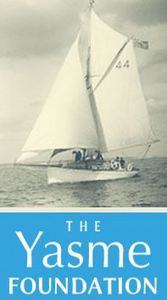 The Yasme Foundation has made a supporting grant to the Open Research Institute (
The Yasme Foundation has made a supporting grant to the Open Research Institute (.JPG) The IARU has developed a paper addressing increasing noise from digital devices. International Amateur Radio Union (
The IARU has developed a paper addressing increasing noise from digital devices. International Amateur Radio Union (







